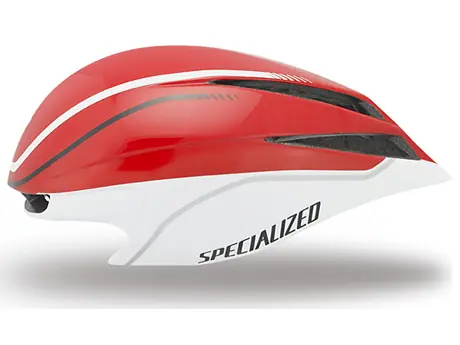
Not long ago, every serious triathlete owned a long-tailed, protruding aero helmet that stretched over the neck and back. Today, these versions have quickly become a thing of the past, replaced by shorter, fully enclosed road helmets.
But do these new designs really offer more aerodynamic benefit than their long-tailed predecessors?
Previous models touted plenty of advantages—all backed up by the latest research. Let's take a look at how scientific theories have changed and how these new road-like aero helmets will provide you with an even greater aerodynamic benefit.
More: Aero on a Budget: Transform Your Ride
The Old Models
The tapered section of the old helmets was created to make the head of a triathlete's body less of a drag-producing protrusion. By "smoothing out" the awkward bend of the neck with a long tail, these helmets were designed to make the air flow over the body more easily.
The idea makes plenty of sense, and for a new design, it worked. It streamlined a triathletes profile much more effectively than a traditional style road helmet.
But against that line of reasoning, the new aero helmet seems odd, and is perhaps even a step backwards. These shorter-tailed helmets have evolved into helmets that have no tail at all, and at first glance look to be nothing more than a fully enclosed road helmet.
So how do the new helmets provide more aerodynamic benefit than previous models?
More: 4 Exercises to Improve Your Aero Position
The New Design
The new thought is that by removing the tail, you must instead emphasize subtle nuances in design at the front instead of at the back in order to create similar aerodynamic advantages.
Today the majority of aerodynamic products are designed using computers. That's because predicting airflow over an object involves a lot of number crunching. How air reacts over one section of a helmet depends on what's going on in the regions directly in front of, behind or beside it.
Calculating airflow gets even more complicated during each step of the helmet design process. In this regard, it's similar to playing a game of chess: as soon as you make the first move, the number of possible next moves grows exponentially. The more moves you try to calculate in advance, the less certain the result becomes because of the increased number of possibilities.
More: 5 Stretches to Improve Your Bike Position
Computers can analyze each possible outcome more effectively to determine the best option. They also allow designers to make changes in a virtual space, which is cheaper than sending test helmets into production. It's these principles—modern computer formulas and the front-to-back aspect of airflow—that's led to the modern designs we see today.
Why Long-Tailed Helmets Are a Thing of the Past
What designers have learned in the past few years is that in order to reduce drag on the backside of a helmet, you must change the shape of its front end. So these "stubby" helmets avoid drag-inducing vortices by tailoring the airflow over them, creating the same aerodynamic benefits with a different approach. This also provides athletes with a reduced surface area in crosswind conditions by eliminating the tail.
In addition, it can also help to reduce drag later in races when the muscles of the neck begin to tire. While most professionals can endure long distances without neck pain, many amateurs know the feeling of a strained neck late in the race.
More: Buying Time: Which Aero Equipment Will Give You the Most Benefits?
To alleviate the fatigue, it's common for athletes to look down for a moment of respite. The drawback to this moment of rest is that your long-tailed helmet becomes an anti-aerodynamic device. It acts almost like a parachute. The new helmet designs don't incur that penalty.
While you still want to do comparison-shopping before you take the plunge on a specific design, you can rest assured that the new style of cycling helmets for triathletes is indeed an improvement.
More: 5 Things I Learned in the Wind Tunnel
 Search for your next triathlon
Search for your next triathlon
About the Author










Discuss This Article